

How to make the most of your 2 day visit to Zagreb
*There may be some affiliate links on this page, which means when you click them I get a small percentage of the purchase at no extra cost to you. This allows me to keep sharing great travel tips, so feel free to click away!*
When people think of Croatia, they almost always think about the Dalmatian coast and the many islands you can sail through in the Adriatic. What they often don’t think about is visiting the capital, Zagreb. It’s not so very well – known as other ‘citytrip’ destinations such as Prague, Budapest, Rome or even Ljubljana and I must admit I also didn’t have that high expectations but as I wanted to visit as much of the country as possible, and I landed there anyway, I could as well visit Croatia’s capital.
I stayed here for 3 nights and had 1 evening and 2 days to discover the city. I really didn’t regret starting my journey in this city as my first impressions of Zagreb already gave me a good feeling about my whole trip. All the sights are relatively close to each other so it is very easy to visit the city on foot.
Here’s a short overview of things to see and do in Zagreb.
Stroll around and enjoy the local vibe
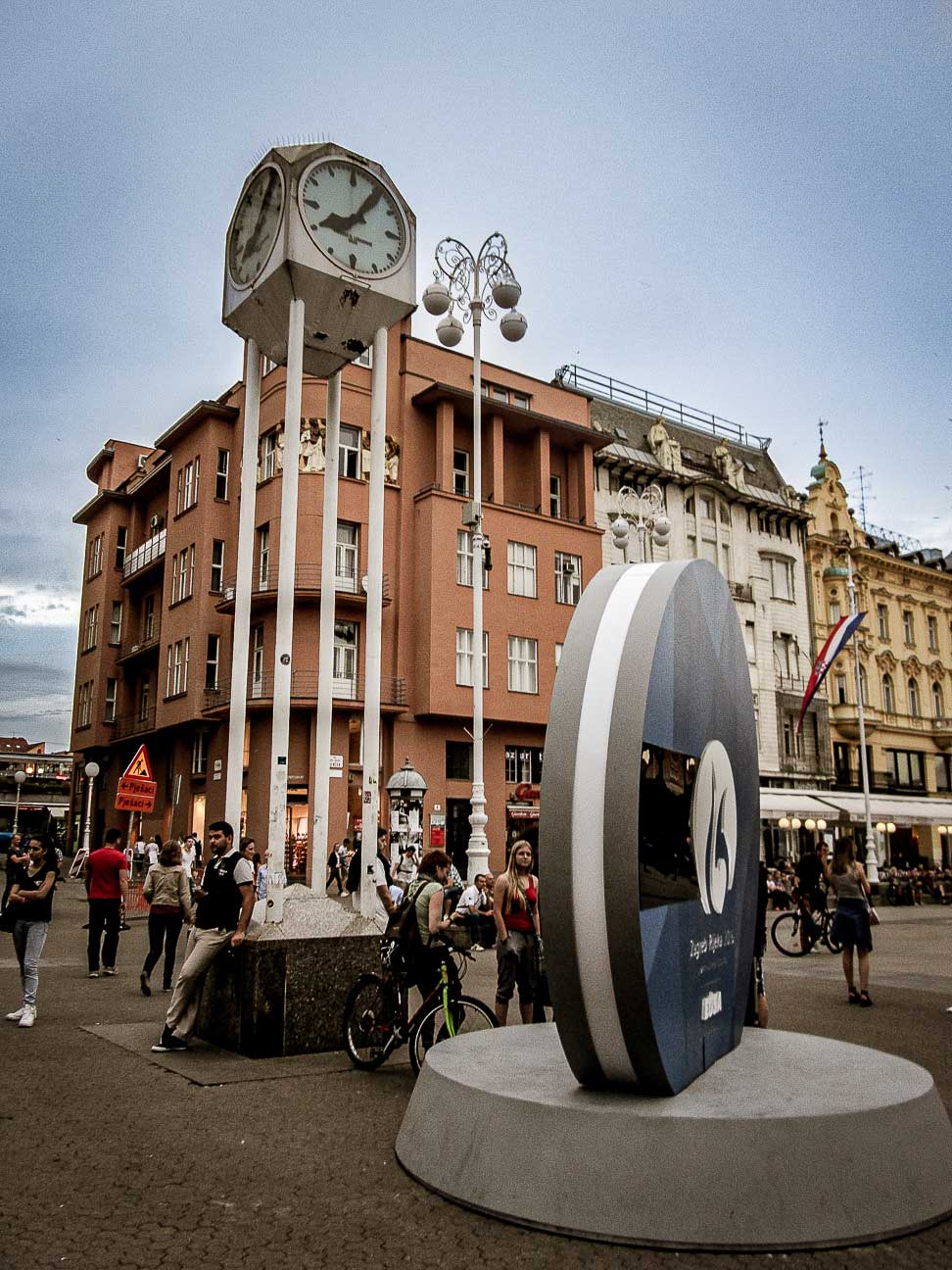
Trg Bana Josipa Jelačića (Josip Jelačić Square)
This is the central square of the city and is the most common meeting place for people in Zagreb. It may not be the most idyllic square but there’s always a lot happening. From street artists, cultural events to big screens broadcasting sports games such as the European Soccer Championship. It is also the starting point of the free guided tours and the main hub for trams driving through the city.
.jpg)
Dolac Market (Source: visitzagreb.hr)
Dolac Market
Just off the square you’ll find some steps up to Dolac Market, a lively market with rows and rows of stalls under red umbrellas selling fresh fruit & vegetables, flowers, meat, cheese, honey, handicrafts and souvenirs. Stroll around for a while and experience the local vibe.(Open from 7am to 1pm)

Funicular
A fun way to go from the lower part of town to the upper part is the funicular which can be found at the end of Tomićeva ulica. It takes you up to Lotrščak Tower.
Lotrščak Tower
Every day at exactly 12 o'clock the canon on top of the tower is fired. This has been done for over 100 years to commemorate a specific day in the mid-15th century. As the legend goes the cannon was fired at a Turkish camp across the Sava River. Instead of hitting the camp the cannonball hit a rooster which was blown to pieces. This event demoralized the Turks so much that they decided to pull back.
For a little fee you can climb the tower and experience a great view over the city of Zagreb. From up here you can see St. Marks Church and Zagreb Cathedral and it’s also a great spot to witness the sunset. If you’re not really into heights, the view from just outside of the funicular is already really worth it.
Museum of Broken Relationships
On your way from Lotrščak Tower to St. Marks Church you will pass by the peculiar Museum of Broken Relationships. What started off as a traveling collection of donated items now is one of the most popular museums in Zagreb. You’ll find a collection of everyday objects that all tell their personal story.

Tkalčićeva Street
One of my favourite streets in Zagreb is definitely the ‘Bohemian’ Tkalčićeva Street (Ulica Ivana Tkalčića). A lively street filled with small boutiques, traditional shops, cafés and restaurants. Ideal to relax and watch people pass by in the afternoon or have a pub crawl with friends in the evening.
Do keep in mind it can be very crowded, especially in high season.
Tip: On Sundays at noon you can watch the cavalry rank march of the honorary cravat regiment.
Petar Preradovic Square / Trg Petra Preradovića
Another nice square in the pedestrian area is Petar Preradovic Square, among Zagreb citizens better known as "Cvjetni Trg" (Flower Square), because of the flower kiosks that are traditionally housed here. The square and surrounding streets are full of bars and cafes, all with an outdoor terrace, and are certain to be full on sunny days. Locals come here to meet their friends, take the children for a stroll and have a drink. You’ll also find the most popular fashion stores as the main shopping street (Ilica) is just around the corner.
Appreciate the beautiful architecture
Zagreb has a lot to offer to the architecture lover. Besides the obvious tourist attractions like the Cathedral and St. Marks Church there’s a lot more to discover. From Neo-Baroque over Art Nouveau to Bauhaus and more contemporary buildings.
Following are a few examples of what to expect.
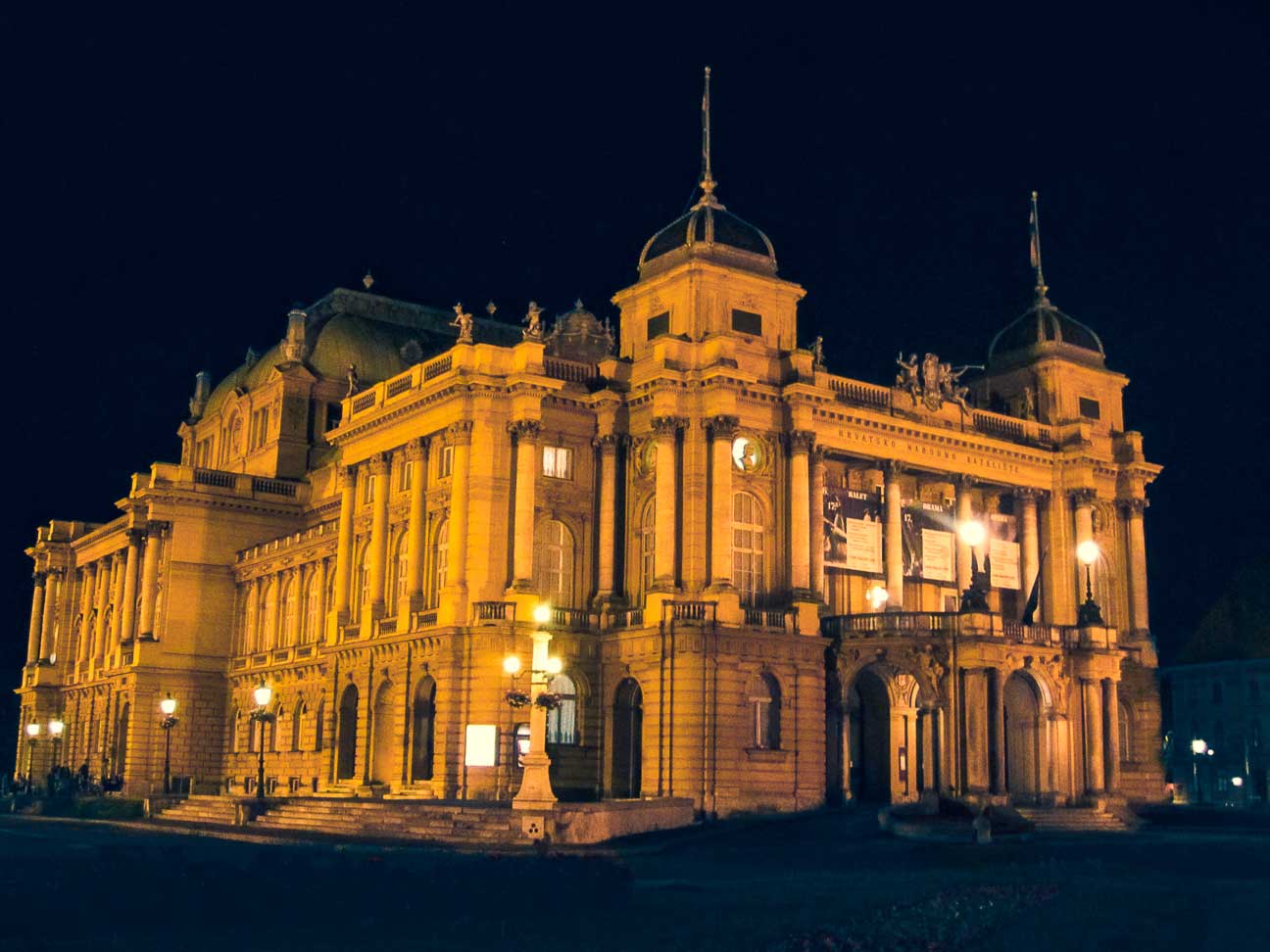
Croatian National Theatre
Located on Trg Republike Hrvatske (Republic of Croatia Square) you’ll find The Croatian National Theatre, a neo-baroque masterpiece which was established in 1895.
If you are into culture be sure to experience one of the many drama, opera or ballet performances in this incredible building.
In front of the theatre, you will find The Well of Life, designed by Ivan Meštrović in 1905. It is claimed to be among Mestrovic’s finest pieces of art.
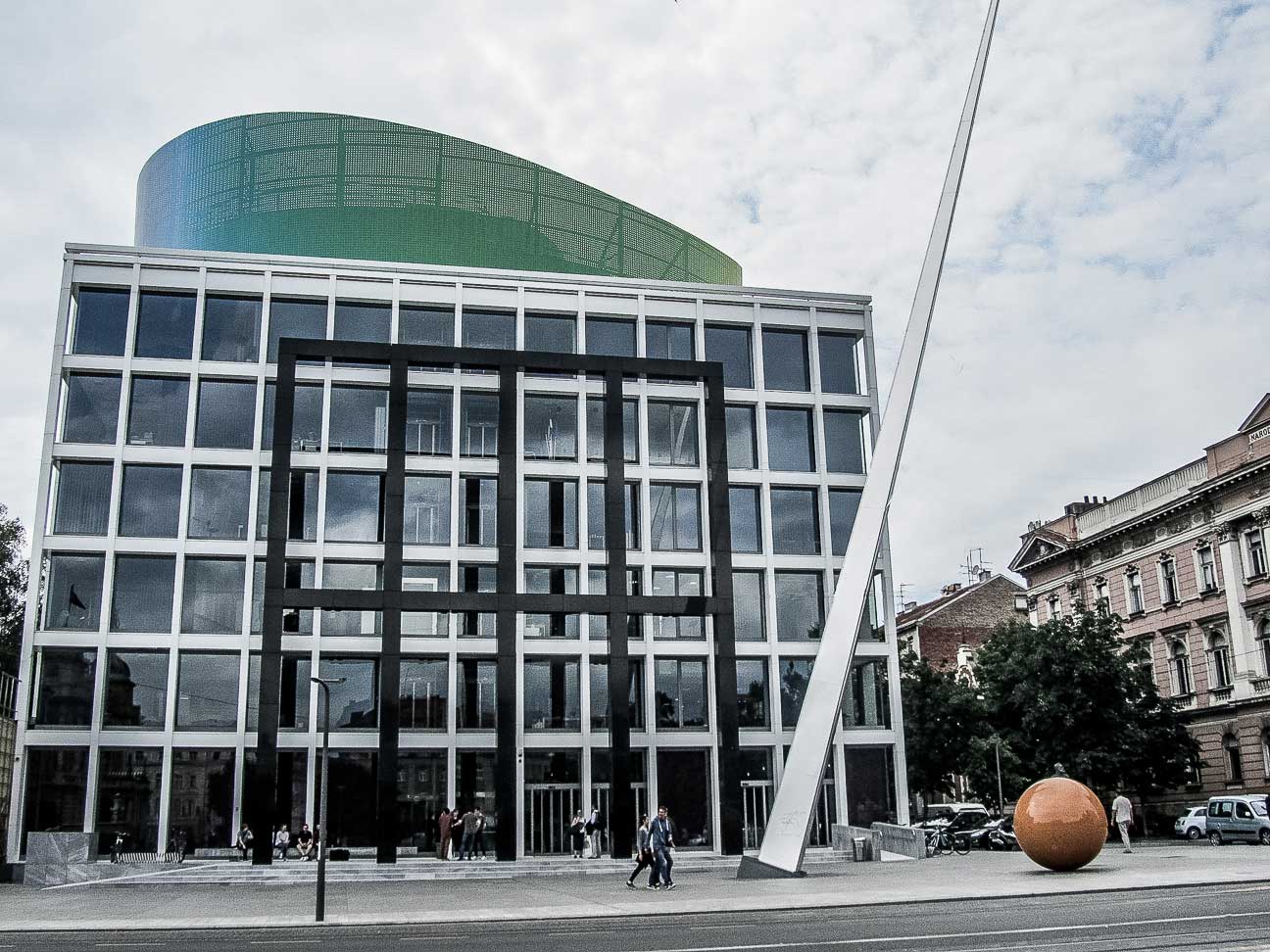
Academy of Music
Standing at the Well of Life, eyeing the National Theatre, you’ll find 2 very contrasting buildings next to each other. On the left, the Museum of Arts and Crafts, a grand historicist palace in the spirit of the German Renaissance and on the right, the colourful modern building which houses the Academy of Music, the oldest and largest music school in the country, tracing its origins back to 1829. It sure is a place of contrasts here :p.
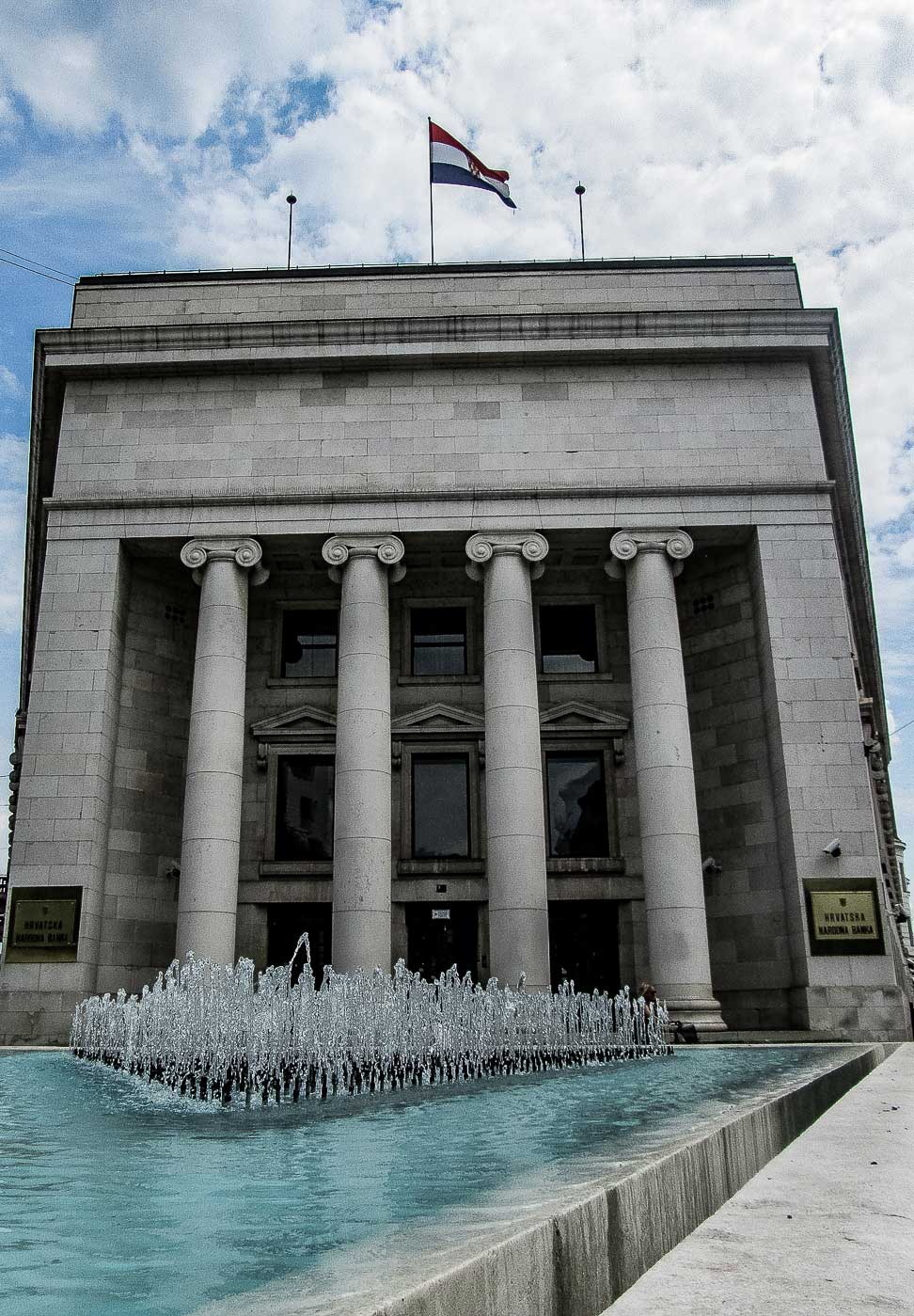
Croatian National Bank
Strolling around the city you’ll most definitely come across the Croatian National Bank. You can’t miss is it as it has a very recognizable façade with its four Ionic pillars resembling an ancient Greek temple. The most important feature is the fronts which are covered in famous island Brač white stone, the same used in the Palace of Diocletion (Split) and the White House in Washington. Right in front of the building you’ll see a triangular shaped fountain.
The palace was designed by the father of modern Croatian architecture, Viktor Kovačić, who unfortunately did not live to finalize his masterpiece. He died in 1924 so the decoration and refurbishment of the interior were finished by his associate Hugo Erlich.
It was originally built to accommodate the Zagreb Stock and Commodity Exchange but after World War II the Croatian National Bank started using the building instead.
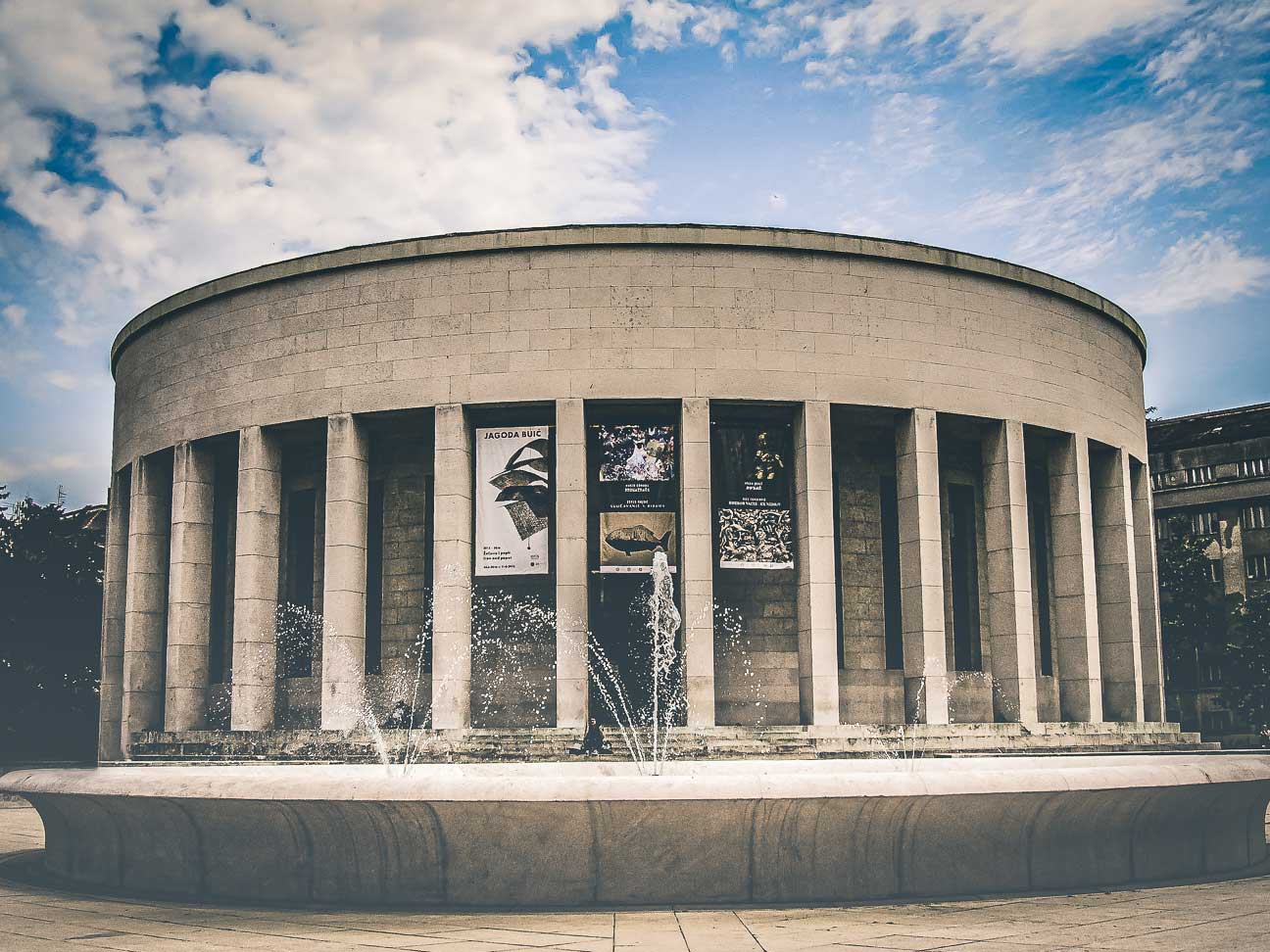
Meštrović Pavillion
A little further down the street you’ll encounter another ’temple-like’ building, the Meštrović Pavillion, an art gallery and architectural masterpiece by Ivan Meštrović.
It was built in 1938 and has had multiple purposes since. Originally it was a monument to King Peter and a house of Fine Arts but only 3 years later it was turned into a mosque with 3 minarets. The mosque was only in use for 1 year and 5 years later the minarets were taken back down and it became the Museum of The Revolution in 1955.
Today it is again a Home of Croation Artists as it was originally inteded to be and one of the most notable arts and exhibition spaces in Zagreb.
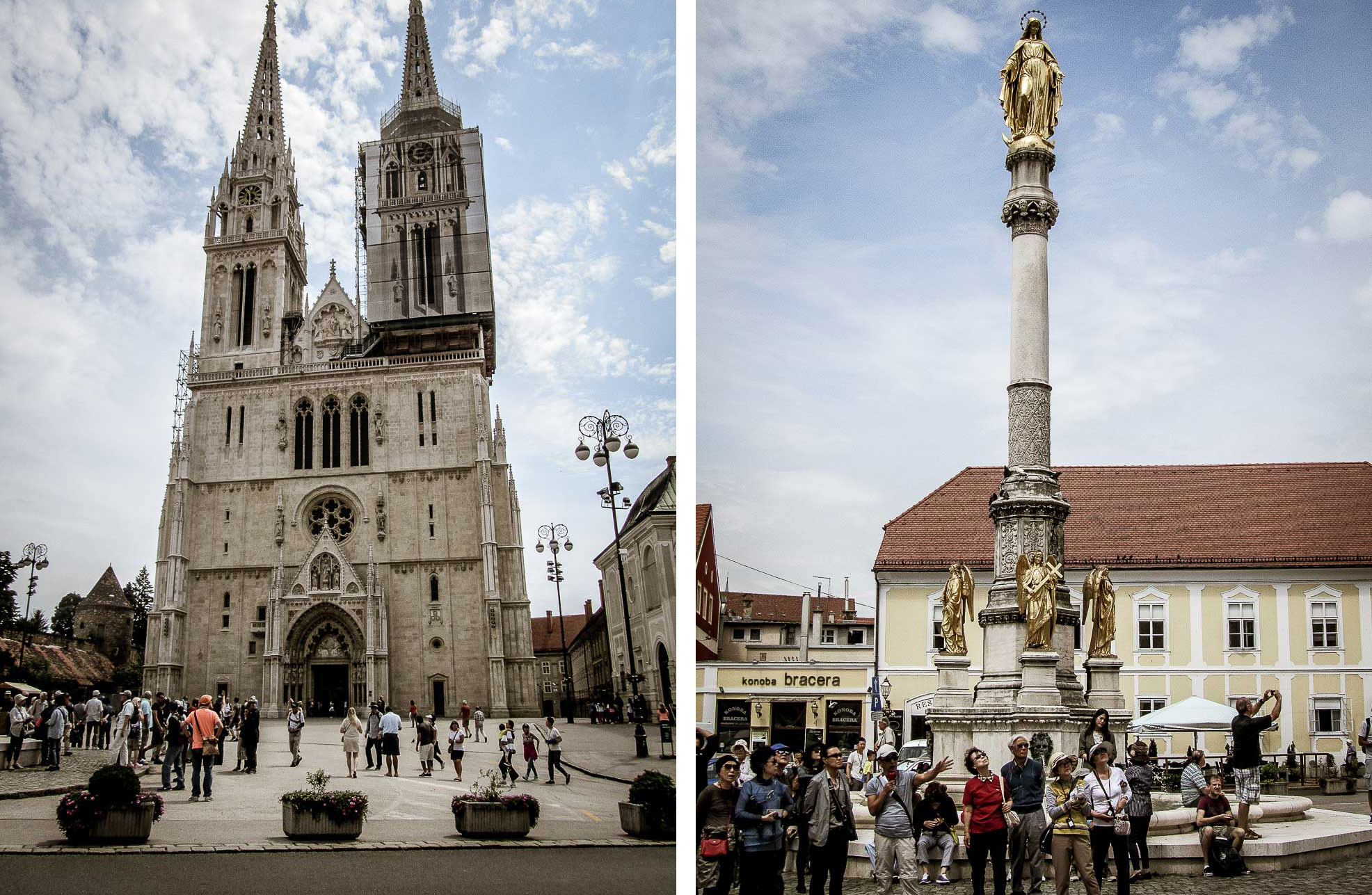
Zagreb Cathedral of the Assumption of the Blessed Virgin Mary
Zagreb’s most recognizable monument,The Cathedral of the Assumption of the Blessed Virgin Mary. It’s the most monumental sacral building in Gothic style southeast of the Alps. The two twin spires of this Neo-gothic church can be spotted from afar and with its 108m, it is the tallest building in Croatia. It’s been there since the 11th century but not in the current appearance. The first cathedral, which was neo-Romanesque, was damaged during the Tartar attack and a great fire in the 13th century. Later, in 1880, it was badly damaged by an earthquake and then restored in the present style.

St. Marks Church
Another iconic landmark is of course St. Marks Church with the unmistakeable blue and red tiled rooftop depicting the medieval coat of arms of Croatia, Dalmatia and Slavonia on the left side and the coat of arms of Zagreb on the right.
The church itself is one of the oldest buildings in the city dating from somewhere in the early 13th century. The colourful roof was constructed by Friedrich Schmidt and Herman Bollé in 1880.
Tip: If you are visiting during a weekend in the months of late April to October, be sure to be here at noon to witness the guard-changing ceremony.
Other buildings to discover: Museum of Arts and Crafts (German Renaissance), Mirogoj Cemetary (Neo-Renaissance), Zagreb Train Station-Glavni Kolodvor (Neoclassical), Kallina House (Art Nouveau), Croatian State Archives (Art Nouveau), Novakova Ulica (Bauhaus), Museum of Contemporary Art (Modern)
Sit down and relax in one of the lovely parks
Wandering around the city you’ll encounter a lot of little and not so little parks. An ideal place to take a rest in the shade and enjoy the greens before exploring the city some more. If you are interested in some more exotic flora you can also visit the beautiful botanical garden.

Try something different
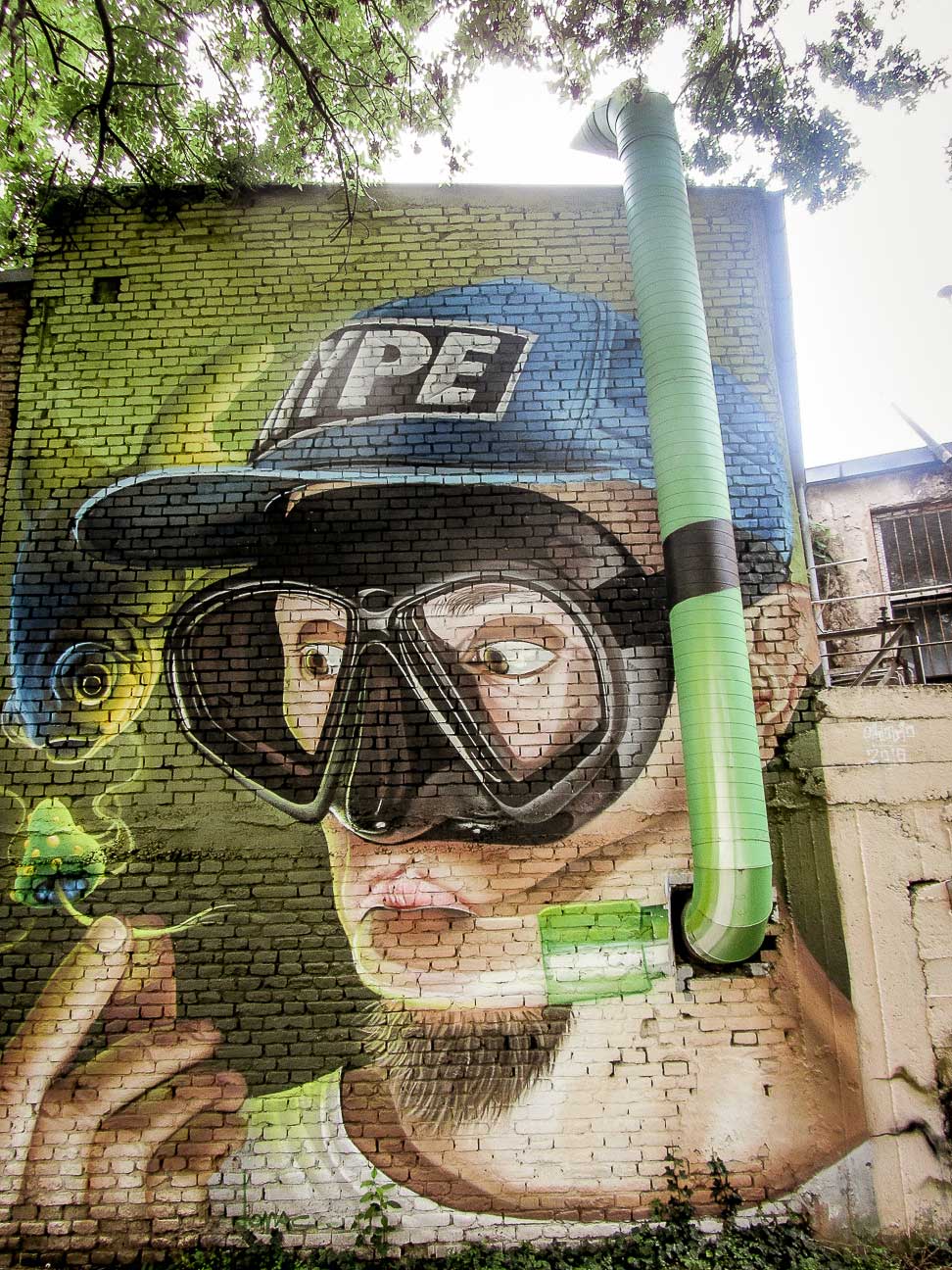
Be surprised by the thriving Street Art scene
I’m a great fan of Geocaching and as I was on my treasure hunt trough the city I came across this cool mural by Lonac, called "Medika Diving". If it hadn’t been for Geocaching I probably would have missed it, that’s why I love it so much. It brings you to places you otherwise would never go to.
I didn’t know it at the time I was there but Zagreb has a fantastic thriving street art scene. Walking around Zagreb you will see all kinds of street art and graffiti everywhere, from tagging to characters to magnificent murals. If you’re really into street art it’s a good idea to take a tour so you don’t miss out on these amazing pieces of art. Zagrebee Tours is a local company that organises tours to experience Zagreb in an unusual and friendly way. They also offer a street art tour for 120 HRK (€16.00).
(If you click on the image you’ll see where to find this mural.)

Discover the city while Geocaching
As I mentioned above, I’m a great fan of Geocaching. It’s a fun way of exploring a city and discover places you otherwise might miss. Geocaches are often hidden at places near popular sights and landmarks but also near less-known, interesting spots worth discovering. As it is a global game you can find them in almost every country, so if you want to explore a destination from a different angle, download the app and go on a little adventure! You’ll be surprised on how many caches are actually hidden all over the world.
*There may be some affiliate links on this page, which means when you click them I get a small percentage of the purchase at no extra cost to you. This allows me to keep sharing great travel tips, so feel free to click away!*






